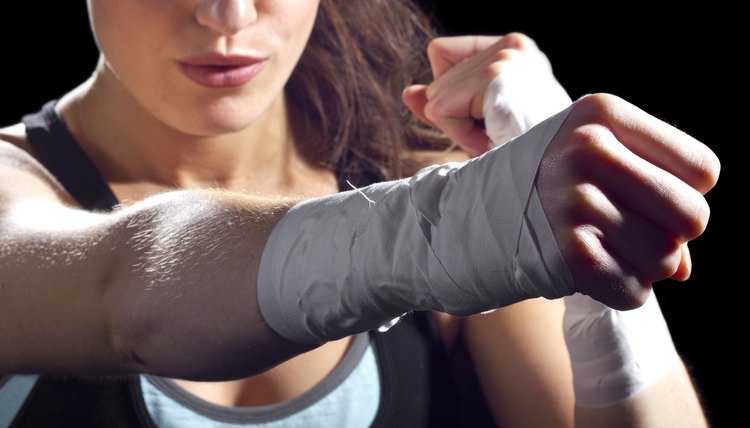The Disadvantages of Krav Maga

Many systems of martial arts claim to be the best. Debates rage online and in the ring about which martial art creates the best fighters. Krav Maga has gained a large following in the 21st century as one of the premier self-defense styles.
Having the ability to defend yourself is important, regardless of where you are in the world. It just so happens that Krav Maga was developed in a fairly dangerous environment. What started as a training program for Israeli troops has blossomed into a commercial self-defense martial art that focuses on real-life situations like a knife attack or mugging.
Drawbacks of Krav Maga
Meticulously planning defense strategies for dangerous attacks is helpful, but it's difficult to actually practice. Many Krav Maga classes use fake weapons like rubber knives to practice disarming an attacker. They practice fake groin kicks since the real strike would be too painful.
In this sense, some of the self-defense art's teachings are essentially role-playing exercises. While a boxing class won't prepare you for a knife fight, you will be able to practice boxing skills at full speed in sparring practice. With Krav Maga, you essentially have to wait until you find yourself in a real-life situation before you can practice the art full-tilt.
As with any commercialized martial art, it can be difficult to tell if you're learning the real thing or a watered-down version. Finding a proper gym can be a difficult task, because there's no competition aspect to Krav Maga.
Lack of Competition
Martial arts like boxing and jiu-jitsu have professional organizations that host competitions. Practitioners practice to be the best at their art because they know they will face an equally or even more skilled opponent in competition. The environment of those competitive martial arts helps push people to higher and higher skill levels.

Krav Maga is based on realistic fighting scenarios, not rules-based martial arts competition. While this helps prepare someone for real-world combat, it doesn't help elevate their skill level. When you train in Krav Maga, you're not preparing yourself to face an experienced opponent.
A lack of competition can hinder your progress because there isn't as much of an incentive to practice and hone your skills. It would be very difficult to turn Krav Maga into a competitive martial art because of the focus on realistic fighting situations involving weapons. It's hard to realistically practice a knife attack because of the inherent danger.
Lack of Focus
In the real world, you have to be prepared for anything that comes at you. That means practicing countless scenarios. You might have to defend yourself against multiple attackers or weapons. The fight could take place in an alleyway or open field. You might start on the ground or standing up.
Preparing for multiple situations means that Krav Maga lacks the focus on martial arts like boxing and kickboxing, where practitioners only have to prepare for a few attacks. Krav Maga teaches you techniques that help in different scenarios but doesn't hone any one particular skill to make it extremely useful in combat.
Drawing Comparisons
Comparatively, you can assume that a boxing gym is legitimate if they produce multiple successful boxers. It's harder to tell if a Krav Maga practitioner is improving if their skills are never tested in a competition.
Because Krav Maga is abstract and designed for street fighting, its practitioners are reluctant to fight athletes from other disciplines like Muay Thai. It's hard to determine the best martial art if the fighters don't participate in competitions. However, it wouldn't make much sense for a Krav Maga practitioner to fight in a regulated sporting event, because their martial art is designed for the unpredictability of warfare and street fighting.
References
Resources
Writer Bio
Henry is a freelance writer and personal trainer living in New York City. You can find out more about him by visiting his website: henryhalse.com.
